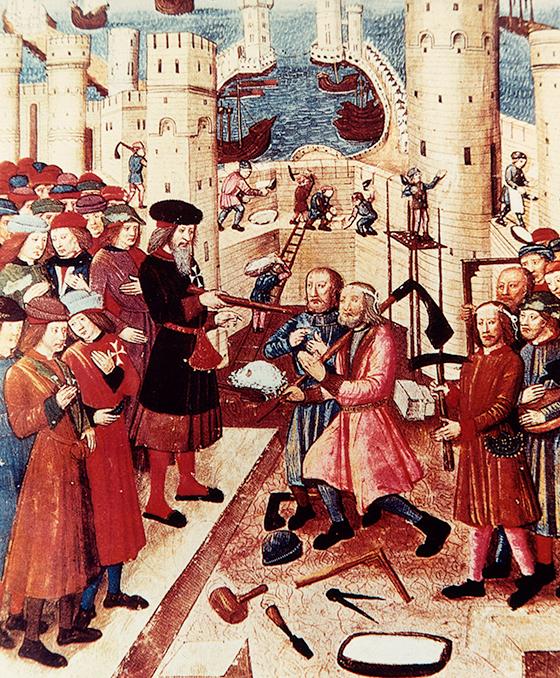Early traces
The earliest trace of Compagnonnage would date back to the Middle Ages.
Only a written document can testify to the existence of groups of young journeymen who travel, help one another, perform rites in various circumstances and own specific attributes and vocabulary. Most of the earliest mentions of compagnons come from judicial archives.
13th century: A stained-glass window in Chartres cathedral and another in the one of Bourges depict stonemasons at work. The band ornamented with foliage or flowers that some of them wear round their heads could be one of the earliest pictures of the flowered ribbons sported by some of the present-day compagnons of that craft.
1419 – 1420: An ordinance by Charles 6th concerns the compagnon shoemakers « of several tongues and nations who would journey from town to town, work to learn, see and know from one another ». These lines are often considered as depicting the practice of the Tour de France.
Between 1464 and 1476: At Dijon the police uncovered the practices of the knife-maker, tailor and saddler compagnons. Organised in societies, they imposed a fee on compagnons arriving from other towns, kept their belongings as security and punished non-compliants.
1480: An illumination by Guglielmo Caorcino depicts the siege of Rhodes by the Turks. Workers are busy reinforcing the defensive walls to prevent an invasion of the stronghold. Within the ramparts, the Grand Master of the Order of the Knights of Jerusalem and his knights welcome a group of carpenters and stonemasons, tools in hands. The Grand Master rests his staff on the shoulder of a carpenter while another kneels down and others step towards the knights. A carpenter and a stonemason wear a ribbon round their head; could this be the ribbon that the compagnons of these crafts would wear round their hat till the early 20th century?
There are other documents that, without formally testifying to the presence of compagnons’ brotherhoods, prove at least that groups of workers had begun to organise independently of the guilds or corporations in several crafts.

The Siege of Rhodes 1480
